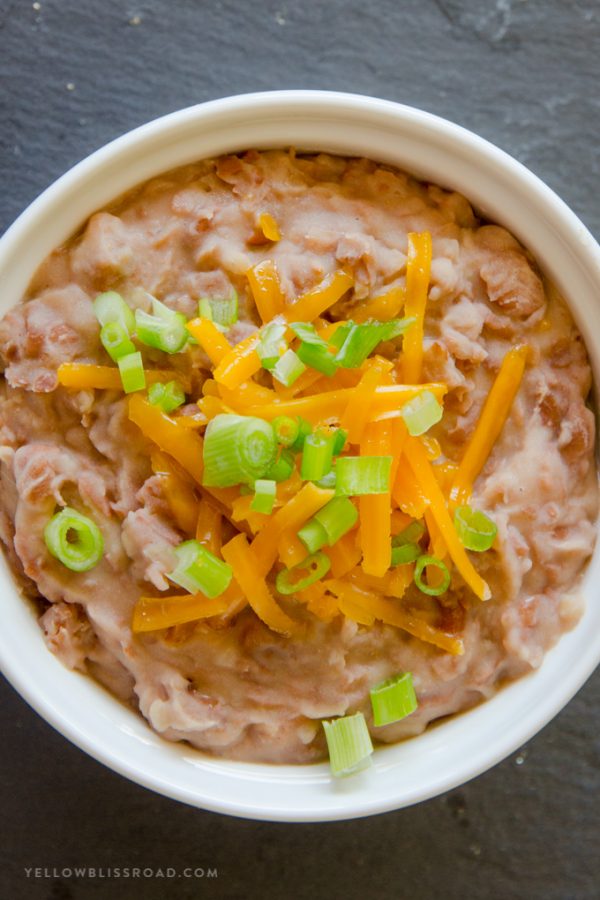Have you ever wondered what makes homemade refried beans so much better than their canned counterparts? The answer lies in the process, ingredients, and love that goes into making them from scratch. Refried beans are not merely a side dish; they represent a culinary tradition passed down through generations. They offer comfort, nostalgia, and an authentic taste of Mexican heritage. This article delves into the art of crafting perfect refried beans, exploring recipes, techniques, and tips to elevate your cooking experience.
Refried beans have become a staple in many households, particularly those with a penchant for Mexican cuisine. Whether served as a side dish, used as a dip, or spread generously on tacos, these creamy delights bring warmth and satisfaction to any meal. Traditional methods involve simmering dried beans until tender before mashing them into a velvety consistency. However, modern adaptations allow for quicker preparation using canned beans without compromising flavor. To achieve the best results, it is crucial to understand key ingredients such as lard or olive oil, onions, garlic, and spices that enhance the natural earthiness of pinto beans.
| Ingredient | Quantity | Purpose |
|---|---|---|
| Dried Pinto Beans | 2 cups | Main base for rich texture |
| Lard or Olive Oil | 3 tablespoons | Enhances richness and flavor |
| Yellow Onion | 1 small, chopped | Adds sweetness and depth |
| Garlic Cloves | 2 large, minced | Infuses aromatic essence |
| Milk (optional) | ¼ cup | Creates creamier consistency |
| Salt | To taste | Seasoning to balance flavors |
Preparing refried beans begins with selecting high-quality ingredients. Dried pinto beans form the foundation, providing a hearty and robust flavor profile. Begin by soaking the beans overnight to reduce cooking time and ensure even softness. Once soaked, drain and rinse them thoroughly before transferring to a pot filled with fresh water. Bring the mixture to a boil, then lower the heat and let it simmer gently for about two hours or until the beans reach a tender consistency. During this stage, resist the urge to overcook, as overly mushy beans can compromise the final product's texture.
Once the beans are cooked, the next step involves creating the base for frying. In a skillet, heat either lard or olive oil over medium-high heat. For authenticity, traditionalists often prefer lard due to its distinct flavor, but olive oil serves as a healthier alternative. Sauté finely chopped onions and minced garlic in the heated fat until translucent and fragrant. This aromatic blend forms the backbone of the dish, infusing layers of complexity into the humble beans.
With the aromatics ready, incorporate the cooked beans into the skillet. Mash them partially with a potato masher or fork, leaving some whole beans intact for added texture. Gradually add liquid—either reserved bean broth, milk, or water—to achieve the desired consistency. Milk lends a creamier finish, while bean broth preserves the original flavor. Season generously with salt, adjusting according to personal preference. Cook the mixture on low heat, stirring occasionally, until all components meld harmoniously.
For those seeking convenience, canned beans provide a viable shortcut without sacrificing too much quality. Simply drain and rinse a can of pinto beans before following similar steps outlined above. While canned options lack the depth of flavor achieved through long simmering, they remain an excellent choice for quick weeknight meals. Incorporating additional seasonings like cumin, chili powder, or smoked paprika can further enrich the taste, compensating for the absence of prolonged cooking.
Homemade refried beans boast numerous advantages over store-bought varieties. Firstly, they allow complete control over ingredient selection, ensuring freshness and nutritional value. Secondly, homemade versions cater to dietary preferences, accommodating vegan, gluten-free, or low-sodium lifestyles effortlessly. Lastly, the act of preparing these beans from scratch fosters connection to cultural roots, preserving traditions while celebrating family recipes.
Experimentation plays a pivotal role in mastering refried beans. Some cooks advocate for using a food processor instead of manual mashing, yielding smoother results. Others swear by adding diced jalapeños for a spicy kick or incorporating grated cheese for indulgent richness. Equipment choices also vary; cast-iron skillets excel at retaining heat, while nonstick pans prevent sticking during frying. Ultimately, success depends on trial and error, encouraging creativity within established guidelines.
Beyond basic recipes, refried beans serve as versatile building blocks for countless dishes. Transform them into dips by blending with sour cream or yogurt, garnishing with fresh cilantro and lime juice. Layer them onto nachos, tucking beneath melted cheese and guacamole. Spread them inside burritos, paired with rice, chicken, and salsa. Their adaptability knows no bounds, limited only by imagination.
In conclusion, crafting homemade refried beans represents more than mere cooking—it embodies artistry, culture, and passion. By embracing traditional techniques and experimenting with modern twists, anyone can produce restaurant-quality beans right at home. So gather your ingredients, roll up your sleeves, and embark on a flavorful journey through one of Mexico's most cherished treasures.



